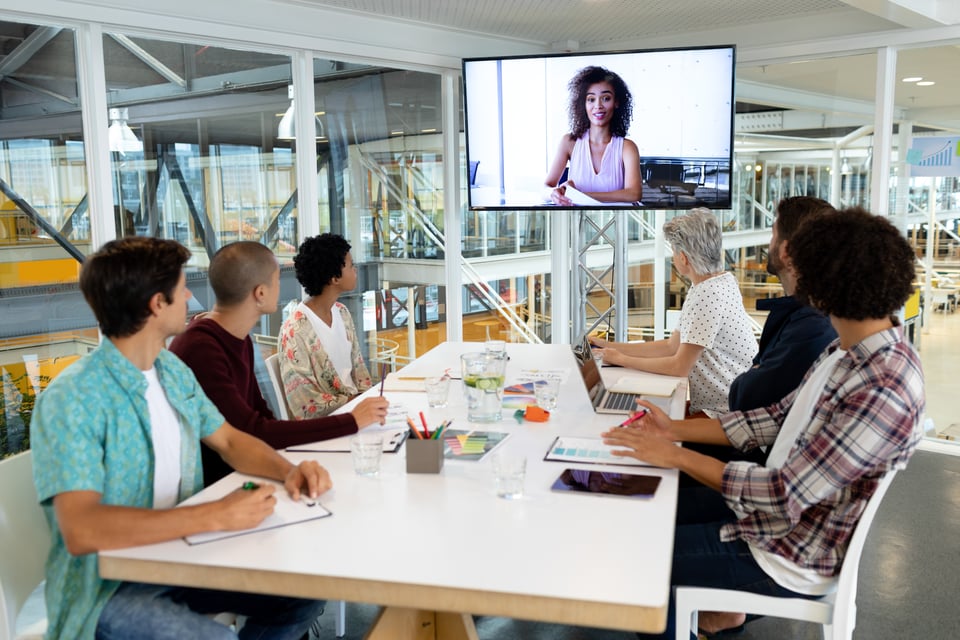>
Title Our Blog
How to design your meeting spaces for stronger collaboration | Rampart
Karl Elhen
Feb 8, 2022 11:00:00 AM

Team collaboration is essential for today's businesses, helping to inspire fresh ideas, improve communication and overcome challenges. But without well-designed meeting spaces, this teamwork becomes virtually impossible.
When designed properly, meeting spaces can help your teams thrive, thus boosting productivity and bringing your employees closer together. In contrast, a lack of good collaboration space creates frustrating roadblocks that slow your teams down.
In this post, we look at simple ways to design your meeting rooms for maximum collaboration.
1) Dedicated, enclosed meeting spaces
First and foremost, there must be a dedicated space where collaboration can happen without interruption or distraction. This space needs to be separate from casual brainstorming workstations/tables, which are common in open-layout offices. Meeting rooms should be enclosed so that team members can communicate effectively with each other and outside participants on conference calls.
However, just because the meeting room is enclosed doesn't mean it needs to be dark and stuffy. This brings us to our next recommendation …
2) Glass walls
Glass architectural walls make meeting rooms feel more inviting and open, while still creating an enclosed space for collaboration to happen without interruption. Rampart's moodwall systems, for example, are available with double glass and solid wall tiles for maximum noise reduction. Additionally, the glass allows more natural light to enter the space, making it brighter and more aesthetically pleasing. The transparency also helps to limit interruptions: when others can see that a meeting is in progress, they know not to enter and won't need to open the door to check if the space is available.
3) WiFi, power & network infrastructure
Many meeting rooms tend to be WiFi dark spots, making it difficult for teams to stay connected while the meeting is in progress. Make sure these spaces receive the same strong signal as other areas, so that attendees do not lose access to the network or Internet while in the room. Additionally, for intense all-day meetings, make sure there are plenty of electrical outlets readily available around the table, so that employees can keep their devices charged.
4) Video conferencing
These days, a basic tabletop phone-conferencing system doesn't cut it, especially in the new era of hybrid work. Today's teams need robust video conferencing technology that allows them to seamlessly connect with meeting participants around the world. Meeting rooms should be equipped with high-quality cameras, microphones and video displays that capture every moment and ensure crystal-clear communication. Newer "BYOD" (Bring Your Own Device) conferencing systems also allow teams to quickly connect to different meeting platforms (such as Zoom, MS Teams, etc.) without switching devices.
5) Meeting-room automation
Newer conferencing systems can be fully integrated with other technologies to make meeting spaces fully automated. For example, meetings can be kicked off with the tap of a button, automatically initiating video calls while also lowering shades and dimming the lights. Touchscreen devices inside and outside the room can be used to reserve the space and can be synced with users' devices for easier control. All of these features ultimately help teams to move faster and eliminate common roadblocks.
Design a more collaborative meeting space
Discover how Rampart can enhance your meeting spaces with glass architectural walls, demountable partition systems and other office solutions. Contact us today to speak with our experts.
